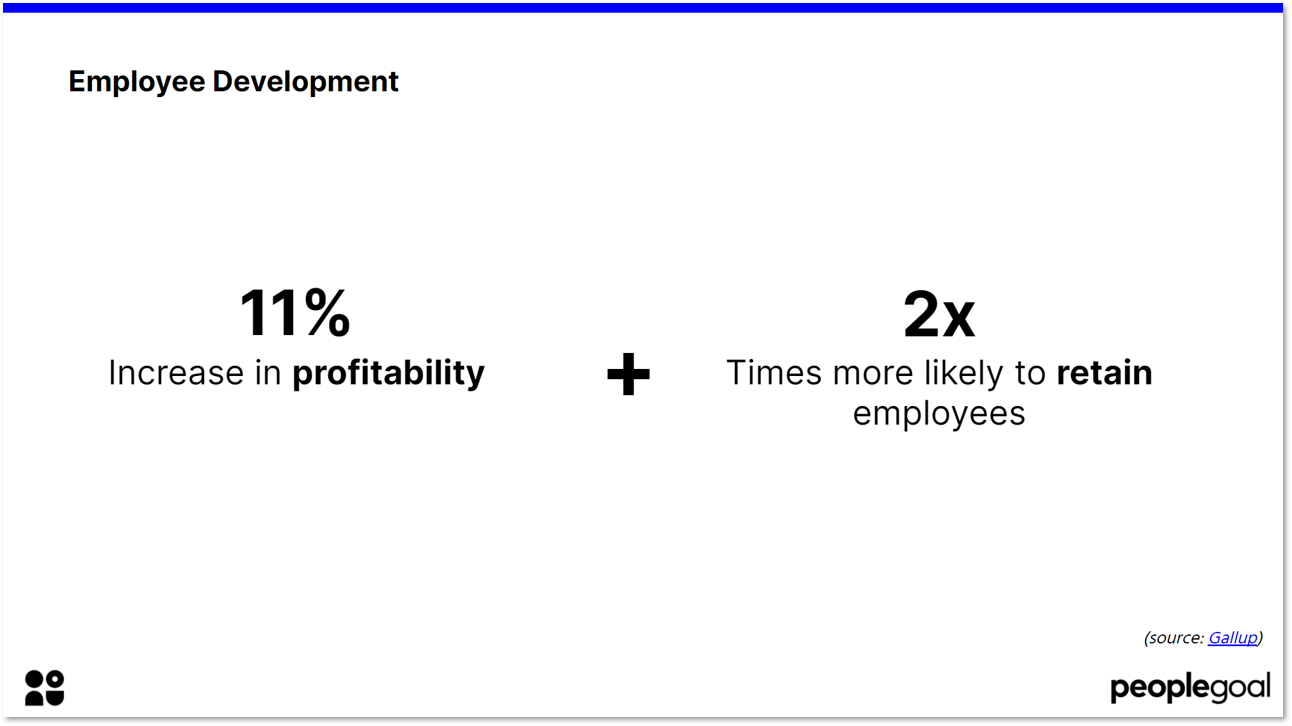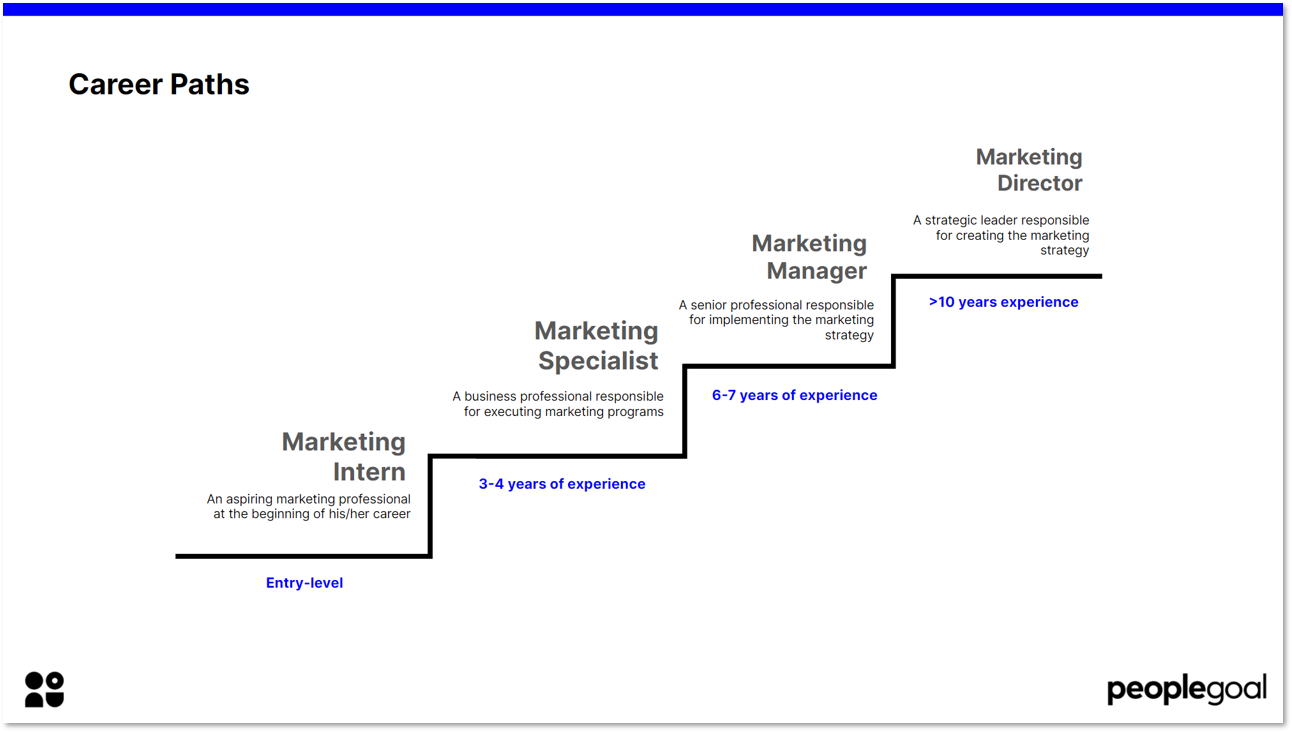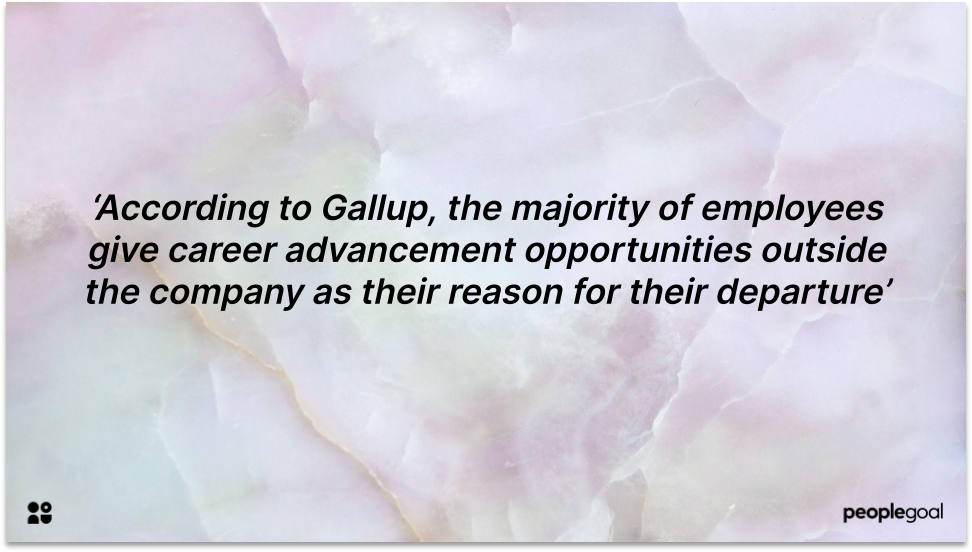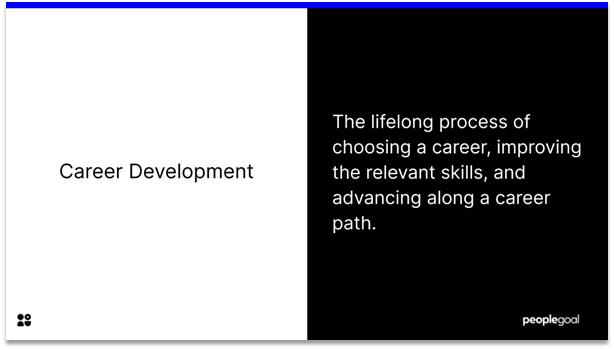Employee development allows employees to expand their current skills and grow their knowledge. Supporting employees’ development is something every company should do as the benefits of having highly skilled, happy and engaged employees are countless.
Employee Development with Career Paths
A career path is a development roadmap in your company. It’s a well-defined path with short- and long-term targets. It defines the route an employee takes from an entry position to arrive at their ultimate career goal.
The Benefits:
- Attract and retain top talent
- Give a sense of purpose to employees
- Enhance the skill-set and diversity of the workforce
- Build a people-centric culture
According to Gallup, one of the most important factors in creating a high-performance workplace is instilling a high-development culture: one that values the growth of individuals.
“Organizations that have made a strategic investment in employee development, Gallup finds, report 11% greater profitability and are twice as likely to retain their employees.”

So, let’s see together the steps that will help your employee climb the career ladder!
How Do You Create Career Paths?
– Read carefully your org chart structure
Setting the roadmap of your employee’s career development will be dependent on how your company structures hierarchy and relationships. You need to know in advance whether your company has a typical structure, a flat structure, or if it uses a hybrid model. This will help you identify horizontal or vertical job growth moves for different teams and departments.
– Define job requirements & build a roadmap for each job
The stairs on each career ladder should be well communicated so that employees know the exact requirements of each role in their career path. You need to set straight the job responsibilities, hard and soft skills required, years of experience and finally what success looks like for each different role.
Before you let employees know how they will advance within your company, you have to define how progress actually works for each career path. What does it take to move from position A to position B? What are the steps that need to be taken to get from point A to point B within a specific career path?

– Identify training needs & create actionable programs
Training will differ from team to team, therefore the potential for development should never be one-size-fits-all. What works for someone in your marketing team may not work for someone in human resources. Additionally, your hiring practices will also influence training needs, i.e. external hires might require more training for fitting into their role and company culture.
Before designing your training and development program, you need to assess and identify the different skills that employees need to develop for moving from one position to another (horizontal and vertical job growth). Once you’ve settled the needs and desired skills, begin planning the training programs for the different roles at your company.
– Develop career paths early on & check-in frequently
Career pathing should be a standard practice for onboarding at your company. Outline a clear advancement roadmap from Day 1 and give new employees the opportunity to see how they can develop new skills, grow professionally and reach their career goals.
To promote and instill professional development, make sure you provide real-time feedback that encourages career growth. Through regular career development one-to-ones, employees are able to work on action items that align better with their current objectives and goals.
– Invest in a career management tool to automate the process
Career pathing is not a paper-based process. Employees need to follow the visual roadmaps that will get them where they really want to go by navigating your company’s development opportunities. With the right tools and resources, you can track employee progress, identify potential gaps for growth, and also analyse and measure how employee development is making a difference.
If you want to find out more about Employee Development, watch our webcast here!
Ready to 3x Your Teams' Performance?
Use the best performance management software to align goals, track progress, and boost employee engagement.





